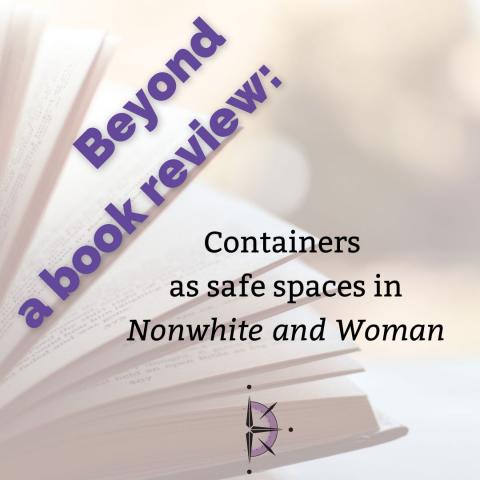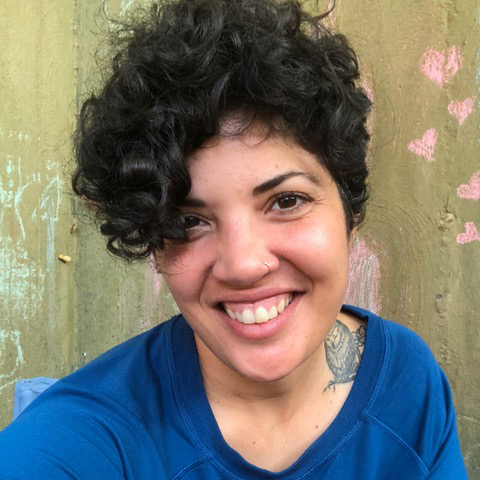
Shawna Ayoub moves "beyond the book review" in not only recommending great books by diverse writers, but highlighting a technique to apply to your own writing.
Nonwhite and Woman, edited by Carla Crujido and Darien Hsu Gee
Reading Nonwhite and Woman as a woman of color was both disturbing and empowering. This collection of 131 micro essays reflects aspects of my presence in the world, but in a way that shows how big of a collective are women of color.
What challenged me was facing the unrelenting pain and beautiful reality of existing as a woman and Other. As I read, I remained aware that writers included in the collection had been invited to share their experiences as inspired by Lucille Clifton’s poem “won’t you celebrate with me,” in which she writes “born in babylon/ both nonwhite and woman/ what did I see to be except myself?”
As I read, I tried unsuccessfully to pinpoint one spectacular essay I could point to as an example of a well-crafted piece. The styles run the gamut of prose, some pieces reading as poetry, others as mini, traditional essays. I bookmarked as I went, but ultimately gave up because I was running out of post-its. Instead, I focused on each piece like it was a long breath, and read as though meditating. It was a process that required me to sit with my own discomfort, noticing fears and anger as well as joy and love as they arose, naming them and letting them move out of the way of the writing I was absorbing. Despite some themes being challenging for me, this was also a very hard book to put down. I was driven to learn what the next writer would say.
This collection offers an incredible variety of new and established voices singing out truth together from within the container of 300 words. These pieces are brief, but they are full, many of them speaking well beyond the page with a singular image or emotion, others requiring a second or third reading to peel away the artfully crafted layers of personal storytelling in a limited number of words.
In fact, the container is what we need to talk about here: how it made possible these 131 micro essays on topics of existence that can often be steeped in pain.
What is a writing container?
A container is a pre-established set of boundaries for your writing. It can be of any size, but typically containers run smaller so that you can feel when you reach the edges of your writing.
Said another way, containers are roadmaps for writing when it comes to difficult topics. They can exist in many forms, but three I’ll discuss here are time caps, word counts, and rules for structure, focused on specific themes or topics (i.e. write for 10 minutes about your first pet). Such parameters give writers a start and end point that support us in focusing and organizing our thoughts, which is especially useful when the thoughts are about difficult topics. Darien Hsu Gee, one of Nonwhite and Woman’s editors, includes an incredibly useful chapter at the end of the collection about container writing that includes a number of prompts.
A writing container as a safe space
As mentioned, containers help us navigate painful topics. A time-cap container, for example, means knowing you are writing only for a certain amount of time, that time is the focus and the writing need not be organized, thereby giving you permission to lean into topics you need to be able to leave on the page. Once the time is up, you move away from that writing.
One time-cap container I like to use: I set a timer and write whatever I would say if I weren’t worried about who might read it. At the end of the writing, I rip, shred, burn or otherwise destroy what I wrote. This is an effective release practice; though as with all trauma writing, when I lead this exercise in a class or workshop, we do a five-minute verbal or written check-in about how that writing made us feel (which can also be thrown away).
A word-count container is of the most benefit when you want to get to the heart of a painful topic. Wouldn’t it be magical if we could say only the words that would make us feel heard? A word count is a great way to practice that paring-down. For trauma writing, I recommend starting with a 100-word cap. This keeps writers from moving too far into the topic and losing sight of their end goal. One easy way to keep track of this word count is to write it in 10 lines of 10 words each. That gives you a visual boundary as you progress.
The third type of container I mentioned is rules for structure. Writing 10 lines of 10 words is absolutely an option. My go-to is called “1 to 10 to 1.” Begin by writing a line that is one word. The next line is two words and so on until you reach 10 words, then reverse and go back down to one word. This forces your thoughts into a different shape and can bring you to unexpected places in your writing. As always, it's important to check in as you write.
A writing exercise
Pick one of the above containers—a time cap, a word count, or a rules-for-structure like a 1-10-1—and write on the topic of an adventure you’ve had. While writing, consider what you gained from that adventure. Know that an adventure need not be big. Rather, it felt big, or evoked big feelings, or became a big memory.
Remember that if you find yourself writing about hard topics, you should check in with yourself afterwards. How did the writing make you feel? Where are you experiencing those feelings in your body? What can you do to center and take care of yourself when you finish?
Purchase Nonwhite and Woman on Bookshop.org (and support independent bookstores across the U.S.)
Will you read Nonwhite and Woman? Have you tried, or will you try, container writing? Share with us in the comments.
Want to receive tips and inspiration like this in your inbox every Sunday morning? Join our email list community! You will receive weekly advice, a year’s worth of weekly writing prompts as a FREE download, and be eligible to participate in our monthly photo prompt contest for a chance to share an original piece of writing with our community of more than 2,400 writers.
